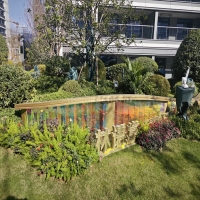Welcome to the website for landscape facilities products and knowledge.
Are there any restrictions on the types of food or beverages that can be safely used on the table’s surface?
Your dining table serves as the centerpiece for countless meals and memories, but have you considered how everyday foods and beverages might be compromising its surface? While tables are designed for dining use, certain substances can cause permanent damage if proper precautions aren't taken.
Hot beverages and dishes present one of the most common threats to table surfaces. Placing freshly brewed coffee, tea, or hot cookware directly on wood, laminated, or glass tables can cause thermal shock. This may result in white rings on wood, delamination of synthetic surfaces, or even cracks in glass tables. Always use trivets or heat-resistant mats as a protective barrier.
Acidic substances represent another concern. Foods like citrus fruits, tomatoes, vinegar-based dressings, and wine can etch into delicate surfaces. When left unattended, these can dull finishes and penetrate through protective coatings. Wiping spills immediately remains crucial, but for extended dining occasions, consider using tablecloths or placemats as additional protection.
Oily foods and dark-colored beverages create their own challenges. Cooking oils, butter, and deeply pigmented drinks like red wine, coffee, and berry juices can seep into porous surfaces or cause stubborn staining. Modern table finishes provide some resistance, but prompt cleaning proves essential for preventing permanent marks.
Alcohol deserves special attention beyond just staining concerns. Spirits and certain liqueurs can act as solvents, breaking down protective finishes and sealants over time. This gradual degradation leaves your table vulnerable to other types of damage.
Practical protection strategies include using appropriate table coverings that don't trap moisture against the surface. For permanent tables, investigate food-safe sealants specifically designed for dining surfaces. Regular maintenance with manufacturer-recommended cleaning products will preserve both the appearance and integrity of your table.
Understanding these restrictions empowers you to enjoy meals without anxiety while ensuring your table remains beautiful for years to come. Simple preventative measures make all the difference between a surface that ages gracefully and one that shows premature wear from food-related damage.
Related search:

Recommendation
Metal and acrylic color-changing combined curtain wall for large-scale public landscape facilities